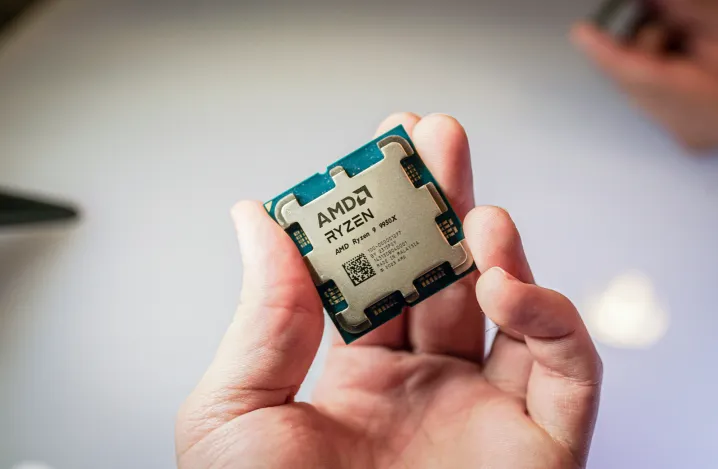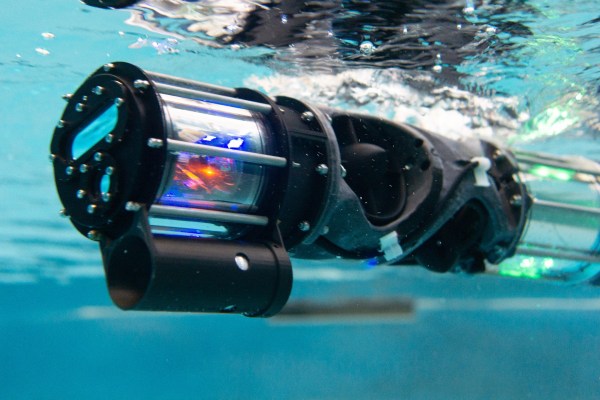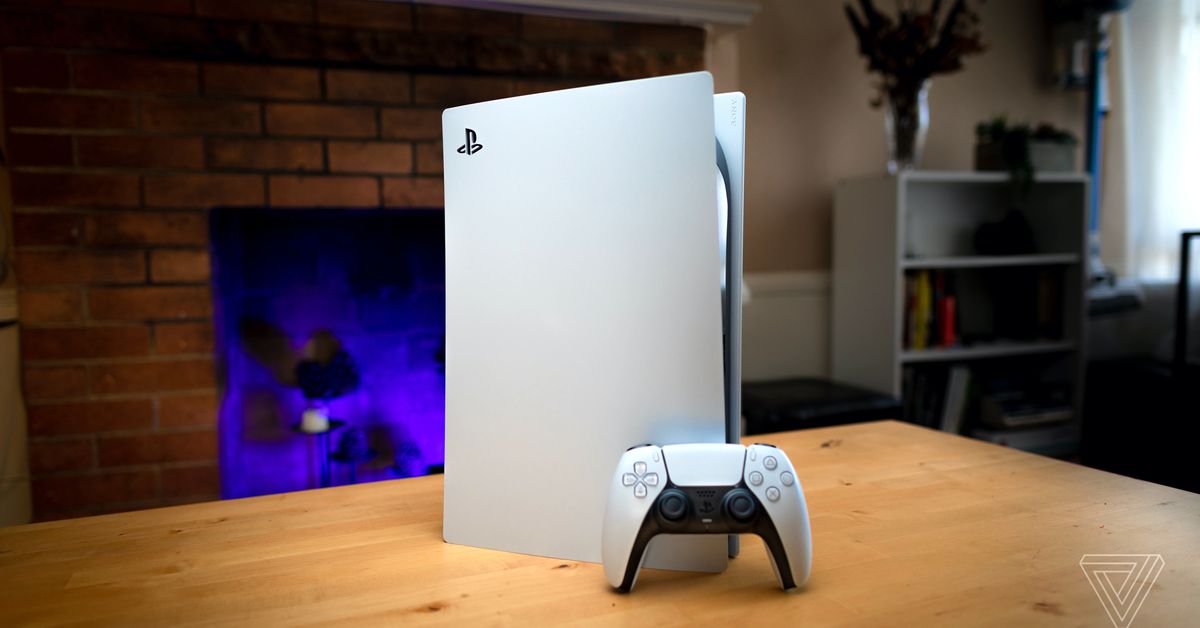How AMD boosted Ryzen 9000 CPUs by 17% overnight
AMD's Ryzen 9000 CPUs didn't get off to a great start, but a bundle of updates have delivered basically a generational improvement overnight.

AMD’s Zen 5 CPUs, called Ryzen 9000, released with a collective sigh. None of them have it made it onto the list of the best processors, not so much because they’re bad, but just because they aren’t the best option. Outside of a few niche tasks, they felt more like a price increase and less like a performance increase compared to the previous generation. But that’s changing.
We’ve seen a handful of updates from AMD over the last couple of months, which have culminated in a new BIOS for AMD motherboards that boosts performance across the range — or so AMD says. I retested the full range of Zen 5 CPUs across games and productivity apps to see where they really sit now that the launch dust has settled.
How did we get here?
 AMD
AMDFirst, a history lesson. The initial Zen 5 reviews were wrought with issues, including our own. This wasn’t the fault of reviewers; it was a lack of communication from AMD on how to properly test its new CPUs. AMD tested on a Windows version with elevated privileges, and in particular, access to better branch prediction. A branch predictor is exactly what it sounds like. It’s a circuit that predicts which of two paths the signal will go inside the CPU. This works with software — i.e. Windows — and the Windows versions available at launch didn’t come with improved branch prediction.
Reviewers retested, and there were performance improvements. But, there were also performance improvements for previous generations of Ryzen CPUs, making the uplift essentially null. Yes, you would get more performance out of a Ryzen 9000 chip, but the dynamic between them and previous-gen Ryzen 7000 CPUs really hadn’t changed.
 Jacob Roach / Digital Trends
Jacob Roach / Digital TrendsSo, AMD tackled the lineup from two directions. For the Ryzen 9 9950X and Ryzen 9 9900X, AMD focused on improving CCD latency. These two CPUs use 16 and 12 cores, respectively, and they’re split into two Core Complex Dies, or CCDs. A CCD can only hold eight cores with AMD’s current architecture, so these CPUs need two. With two separate dies, there’s some amount of latency as the two CCDs communicate with each other, which can have a performance penalty if you’re activating cores on both dies at the same time. AMD figured it could decrease the latency between the CCDs, thereby improving performance.
The Ryzen 5 9600X and Ryzen 7 9700X are in a different situation. Since they both have eight cores or less, they only use a single CCD. To improve performance on these chips, AMD introduced a 105-watt power limit — both previously had a limit of 65W — that was fully covered under warranty with AEGSA PI 1.2.0.2. You could essentially download more performance just by updating your BIOS, and in a way that AMD was still covering under warranty.
That’s where we are now. If you have a single CCD chip, you have more power at your disposal, and if you have a dual CCD chip, you have improved latency, and all four CPUs have access to improved branch prediction inside the most recent Windows versions. And true to its word, AMD delivered quite the performance improvement.
Quite a bit faster
 Jacob Roach / Digital Trends
Jacob Roach / Digital TrendsReSpec is a gaming-focused column, and if there’s anywhere AMD’s Ryzen 9000 CPUs struggled, it was gaming. That was particularly true for the dual CCD models like the Ryzen 9 9950X, which were sometimes even slower than their last-gen counterparts. No longer. As you can see from my results above, AMD delivered somewhere between a 9% and 12% performance uplift across Tiny Tina’s Wonderlands, Final Fantasy XIV, and F1 2022.
There aren’t improvements in every game, notably graphically intensive titles like Red Dead Redemption 2. However, the improved CCD latency and better branch prediction shored up the weaknesses of Ryzen 9000 in games like F1 2022 where they looked terrible before. AMD still has a gaming problem with a last-gen CPU like the Ryzen 7 7800X3D claiming the highest performance slot, but that’s a different discussion for a different day.
 Jacob Roach / Digital Trends
Jacob Roach / Digital TrendsIt’s not just the latency improvements for dual CCD models. You can see above that the Ryzen 7 9700X saw a similar performance improvement in the same games. The picture of Ryzen 9000 at launch is much different than it is today. You’re not going to see a performance improvement across the board — you rarely see that with CPUs, even with an entirely new generation — but the titles that benefit from the extra horsepower show off that benefit in higher performance.
That’s good news. If you have a Ryzen 9000 CPU or plan to buy one, all you need to do is install the latest BIOS and Windows updates and enjoy higher performance, at least compared to where the CPUs were at launch. That more interesting shift is with the Ryzen 5 9600X and Ryzen 7 9700X now that they have access to more power.
The answer is more power
What’s the answer to lagging performance? More power, of course. Although throwing more power at the problem can lead to situations like the Core i9-14900K, it became clear early on with the Ryzen 5 9600X and especially the Ryzen 7 9700X that they could handle more power. Both CPUs launched at only 65W, and although that power range makes sense for the 6-core Ryzen 5 9600X, it really doesn’t for the 8-core Ryzen 7 9700X. AMD wanted to make a statement about efficiency at launch, and it backfired.
 Jacob Roach / Digital Trends
Jacob Roach / Digital TrendsAMD didn’t make that statement without reason, however, and my gaming results above for the Ryzen 7 9700X show why. This is identical performance. Sure, you lose a frame in Assassin’s Creed Mirage and gain a few in F1 2022, but show me anyone that can tell the difference between the 65W and 105W modes in games, and I’ll show you a liar.
Gaming isn’t the focus with this higher mode, and if you primarily focus on gaming, I’d leave it turned off. You’re just drawing more power and generating more heat for no payoff. If you use other CPU-intensive applications, though, the new 105W mode is a paradigm shift.
 Jacob Roach / Digital Trends
Jacob Roach / Digital TrendsLook at the results in Y-Cruncher above. As the name suggests, this app is all about crunching numbers, using your CPU to calculate (in this case) 100 billion digits of Pi. There’s a respectable 9% improvement with the Ryzen 5 9600X, but the real win is with the Ryzen 7 9700X where there’s a 17% jump.
Y-Cruncher isn’t the only place where there’s this kind of performance increase. In both Blender and Handbrake, the Ryzen 7 9700X shows a massive performance jump. There’s a jump with the Ryzen 5 9600X, too, but it’s not nearly pronounced. These results alone prove that AMD didn’t deliver enough power to the Ryzen 7 9700X at launch, and this new 105W mode is a huge boost in non-gaming apps.
And just because I know readers want to see them, you can see my Cinebench R23 results above. There’s no movement with single-core performance, but once again, the Ryzen 7 9700X shows a massive jump in multi-core performance.
The other side of the coin
 Jacob Roach / Digital Trends
Jacob Roach / Digital TrendsNo one can argue with a free 17% performance increase — especially in 2024. As it continues to get harder for companies like AMD and Intel to squeeze out more performance, a 17% improvement is a true generational jump. And in this case, we’re not even talking about the difference in two generations. We’re just talking about power modes. Make no mistake, there’s an alternate reality where AMD sandbagged this update for a mid-gen hardware refresh. Thankfully, that’s not where we are.
This is a positive move, and I don’t want to distract from that. Still, it’s important to recognize that AMD marketed and sold a product that wasn’t ready. These aren’t the marginal performance increases we see over the course of a year and a dozen BIOS updates — this is foundational performance that was totally absent from the CPUs AMD sold to customers at launch. It’s great that the extra performance is here now, but we should’ve had it back in August when the CPUs released.
The folks working on these parts at AMD — and at Intel and Nvidia, for that matter — are unironically some of the smartest engineers in the world. They knew how the Ryzen 7 9700X performed at 105W; they knew about branch prediction differences in Windows; and they knew about CCD latency on the two Ryzen 9 chips, and I would bet they knew all of that before the CPUs released. I don’t think AMD intentionally restricted the chips, or that it made any changes to them out of malice. To me, this reads like a company with deadlines that released a product that wasn’t ready.
Thankfully, it looks like Ryzen 9000 is ready now. There’s still plenty of discussion around the value of last-gen AMD components, and the competition from Intel as we stare down the release of Arrow Lake CPUs. But for now, after two months on the market, Ryzen 9000 chips have finally been brought up to par.

 JimMin
JimMin 




































